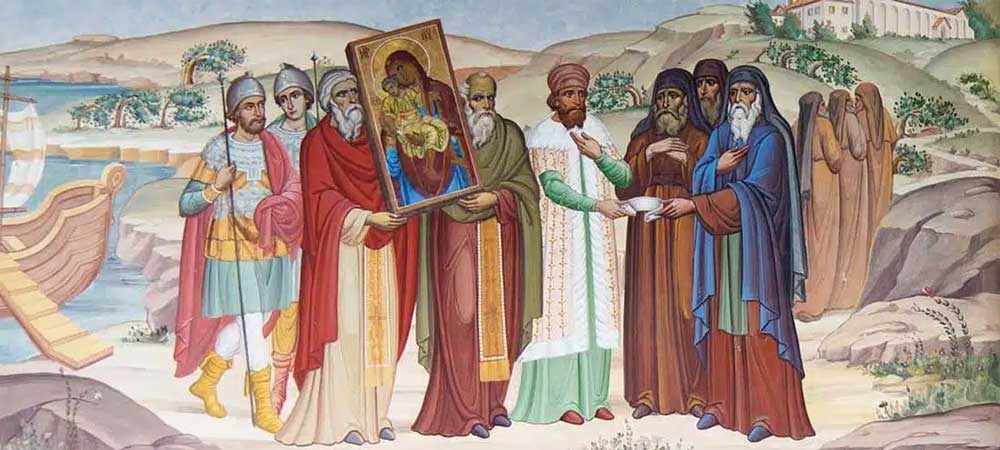Life and Martyrdom of Saint Catherine
 Saint Catherine of Alexandria (282 – 305), also known as Saint Catherine the Great Martyr according to the hymnologists of the Orthodox Church . She became a Saint because she remained steadfast in her beliefs despite the pressures and tortures she suffered, according to early 4th century.Saint Catherine is one of those figures of Orthodoxy whose life and actions touch the limits of myth.
Saint Catherine of Alexandria (282 – 305), also known as Saint Catherine the Great Martyr according to the hymnologists of the Orthodox Church . She became a Saint because she remained steadfast in her beliefs despite the pressures and tortures she suffered, according to early 4th century.Saint Catherine is one of those figures of Orthodoxy whose life and actions touch the limits of myth.
There is no historical information about the action and life of the saint, no historian mentions her until the end of the 9th century and given that the time of her martyrdom was determined around 305 AD, there is a “silence” of five centuries.
Saint Catherine already at the age of eighteen possessed the knowledge of Greek, Roman and Latin literature and philosophy, that is, she knew the works of Homer, the Latin poet Virgil, Asclepius, Hippocrates and Galen the physicians, Aristotle and Plato, Philistion and Eusebius the philosophers, Iannis and Iambri the great magicians, Dionysius and the Sibyl and others. But she was also thoroughly trained in the doctrines of the Christian faith.
According to the legends (tradition) and the Synaxaria of Saint Catherine, when the Emperor Maximinus was informed of what was being spread about her ideas and the Saint’s way of life, he commissioned famous orators to debate with her in order to prove to her the baseless and twisted of her ideas.
But the result was the exact opposite. Catherine managed to make them convert to Christianity. When the Emperor learned the result, he was so enraged that he ordered the death sentence of all at the stake in the middle of the city, and he subjected Catherine to torture until death.
According to tradition, the body of the Saint was carried under “wings of angels” to Mount Sinai, where the well-known holy Monastery of Saint Catherine of Sinai was built.
Her symbols in iconography are the spiked wheel and blood-letting knife (instruments of her torture), the palm branch, the sacred reed and books (symbols of her spirituality), and Mount Sinai (as part of her burial).
The day of Saint Catherine’s martyrdom is considered to be November 24, and the day of the discovery of her relics is considered to be November 25. However, apart from all the Slavs who to this day honor the day of the saint’s martyrdom, all other Christians, on the recommendation of the monks of Sinai, gathered in one and both feasts and designated November 25 as a day in honor of her holy memory, co-celebrated with the performance of the Entrances of the Theotokos.
The Holy Relics of the Saint are incorruptible in the Holy Monastery of Sinai. Saint’s Finger is in the Buckingham Palace Collection, London.
